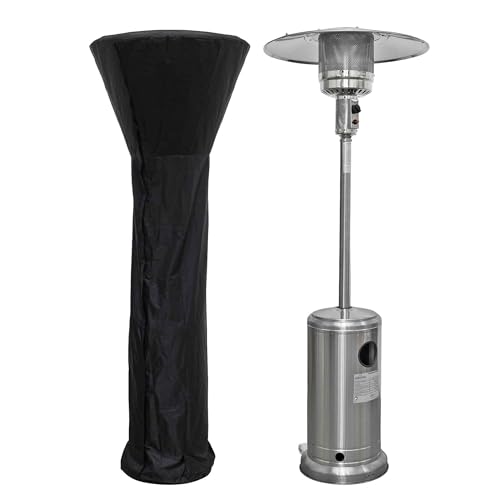The One Patio Heating Mistake That Every Beginner Makes
Buying Gas Radiant Heaters: A Comprehensive Guide
Gas radiant heaters have actually gotten appeal over the last few years for their efficiency and capability to offer instantaneous heat. As more homeowners and companies search for ways to keep their areas comfy, understanding the features, advantages, and factors to consider when buying these heating units can be extremely informative. This post explores the complexities of gas radiant heaters, aiding possible purchasers in making informed choices.
What are Gas Radiant Heaters?
Gas radiant heaters are devices that use propane or natural gas to emit heat directly into a space. Rather than heating the air, they warm things and people in their area, offering convenience more rapidly and efficiently. These heaters are popular for both indoor and outdoor settings due to their flexibility and efficiency.
Secret Features of Gas Radiant Heaters
- Direct Heating: Unlike conventional heaters that warm the air, gas radiant heaters supply direct heat, making them an efficient choice for rapidly warming up areas.
- Mobility: Many designs are readily available as portable systems, allowing them to be quickly moved from one location to another.
- Fuel Variety: Gas radiant heaters can be powered by natural gas or propane, giving users versatility based on schedule and preference.
- Adjustable Settings: Most gas radiant heaters come with adjustable heat settings, enabling users to personalize the level of warmth based upon their requirements.
Advantages of Gas Radiant Heaters
- Energy Efficiency: These heaters transform gas into heat efficiently, leading to lower energy bills compared to electric heaters.
- Quick Heating: Radiant heat is felt nearly right away, making these heaters ideal for abrupt temperature level drops.
- Low Maintenance: Gas radiant heaters usually need less upkeep than electric designs, making them a hassle-free choice.
- Environmentally Friendly: When powered by tidy natural gas, these heaters can be a more environmentally sustainable option compared to other heating methods.
Kinds Of Gas Radiant Heaters
When it comes to selecting a gas radiant heater, it's important to comprehend the different types offered. Below are the most common options:
- Indoor Gas Radiant Heaters: Designed for indoor spaces, these heaters are generally vented or unvented and often included built-in safety functions.
- Outdoor Gas Radiant Heaters: Commonly utilized in patios or outdoor dining areas, these heaters are developed to stand up to the elements.
- Wall-Mounted Gas Radiant Heaters: A space-saving option, these units are perfect for smaller areas and can be outfitted with various heat outputs depending upon the area's requirements.
- Freestanding Gas Radiant Heaters: These portable models can be utilized in numerous locations, ideal for those who require flexibility.
Buying Guide: How to Choose the Right Gas Radiant Heater
When acquiring a gas radiant heater, numerous elements must be considered to guarantee you pick the right design for your space:
1. Heating Capacity
- Measured in BTUs (British Thermal Units), the heater's capacity figures out how much area it can successfully warm. Fireplaces And Stoves ought to examine their particular requirements based upon space size.
Space Size (sq feet)
Recommended BTUs (for Gas Radiant Heaters)
100 – 200
5,000 – 10,000 BTUs
200 – 400
10,000 – 20,000 BTUs
400 – 600
20,000 – 30,000 BTUs
600 – 800
30,000+ BTUs
2. Type of Gas
- Consider whether you will be using propane or natural gas, as various heaters accommodate various fuel types.
3. Safety Features
- Try to find designs equipped with security features such as automated shut-off valves, tip-over security, and oxygen depletion sensing units.
4. Setup Requirements
- Some heaters might need expert installation, especially vented models. Be sure to think about the costs and requirements associated with installation.
5. Portability
- If versatility is important, consider portable designs that can be easily moved from one location to another.
Installation and Maintenance
Gas radiant heaters are generally straightforward to set up, specifically portable models. Nevertheless, vented options might demand expert installation to guarantee they satisfy local security codes.
Upkeep usually includes:
- Regular cleaning to prevent dust accumulation.
- Examining gas connections and fittings for leaks.
- Ensuring security functions are functional.
Idea: Regular checks around the unit can help extend its life-span and maintain security.
Frequently Asked Questions (FAQs)
Q1: Are gas radiant heaters safe for indoor use?A1: Yes
, as long as they are effectively vented and geared up with necessary safety features, they can be securely utilized inside your home.
**Q2: Can gas radiant heaters be utilized in enclosed spaces?A2: Unvented gas heaters can pose dangers in enclosed areas due to possible suffocation or carbon monoxide gas accumulation. Constantly make sure adequate ventilation. Q3: How do I understand what size heater I need?A3: The suitable size depends on the location you intend to heat. Refer to the BTU chart
above to determine your needs. Q4: What is the difference in between propane and natural gas heaters?A4: The main difference lies in their energy source
**; propane is delivered by means of tanks, while gas is typically piped into homes. Q5: How can I maximize efficiency?A5: Ensure the heater is properly sized for your space, maintain it frequently, and think about utilizing it in combination
**with other heating methods for optimum convenience. Gas radiant heaters can be a great addition to any home or organization, using energy-efficient and fast heating solutions. By understanding the different types, features, and considerations
when acquiring, buyers can make educated choices that satisfy their heating requires. With the ideal choice, these heaters supply convenience, reliability, and a welcoming environment during chillier seasons.  ******
******